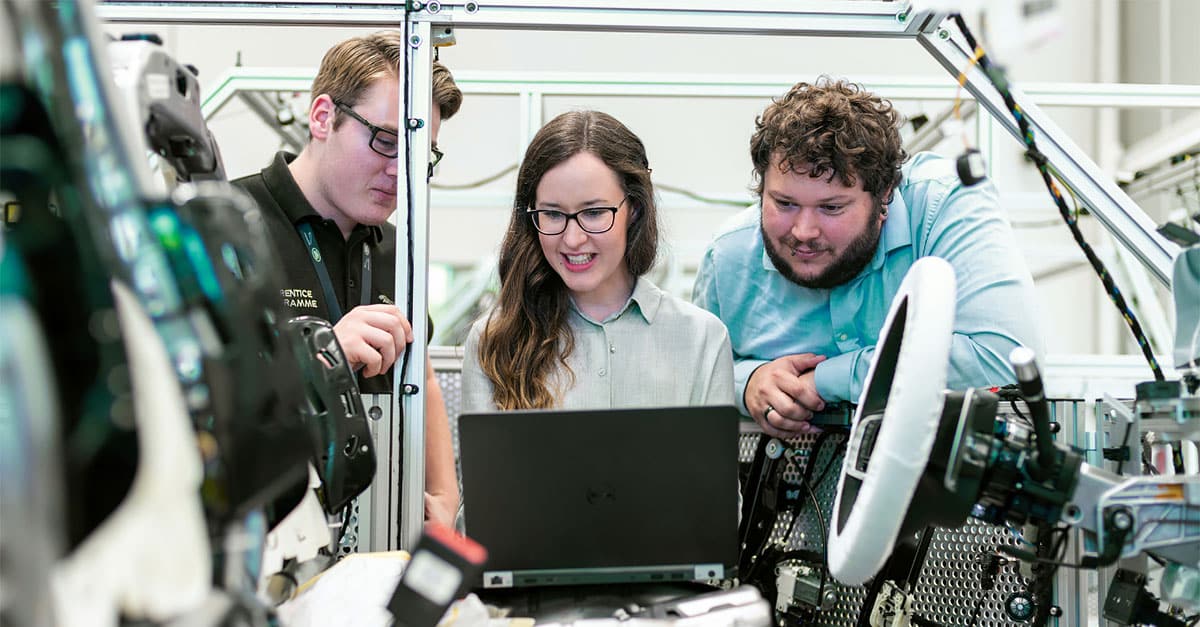28/07/2021
A hybrid workplace might be all we need to strike the right balance between remote working and fully in-person environments

Covid-19 certainly helped fast-track strategic workplace initiatives that addressed a divided workforce and, in the process, fuelled digital transformation. However, in the months following our impressive efforts to replicate the pre-Covid office in a virtual environment, accessible from the comfort of our homes, and freeing us from our desk-bound working lives, we’ve hit a wall.
Despite this expedited transformation being considered as something of a miracle for many business owners, many of us are now experiencing video meeting overload, and – in some cases – a huge lack of work-life balance. The time we would normally have spent commuting, perhaps on the train, reading or watching videos and disconnecting from our jobs before the working day began, is gone. Instead we use this time to work more. The jaunt outside into the fresh air to grab a sandwich for lunch is also gone, replaced by time spent munching something out of the fridge in front of your computer screen.
However, while it’s clear that going back to how things were, for example a five-day stint in the office, isn’t the way forward, the real question is how exactly will we succeed in continuing to support it?
Hitting the sweet spot
As we gradually tame the pandemic with vaccines and it’s much safer to venture back to our places of work, offices have begun opening again and businesses are wrestling with the idea of sending their staff back to continue their jobs in the pre-COVID way: sitting at their desks.
Not so fast. Research from Gartner suggests this could be a mistake.
According to a report by the analyst firm’s research director, Alexia Cambon, businesses insisting their staff go back to a fully in-person environment could risk losing up to 39% of their workforce.
On the other end of the spectrum, the report establishes that businesses insisting their staff work on a fully remote basis is no good either, as this could just continue to increase fatigue.
It’s clear, then, that it is all about getting the right balance, and right now there’s certainly a lack of that. Enter the hybrid work environment.
DIGITAL WORKPLACE WHITEPAPER
In this whitepaper, written by Nitin Bhudia, Head of Service Management & Engineering, we’ll be exploring some of the biggest game-changers for the digital workplace, together with use cases and real-life applications to better enable your digital workers.
Hybrid, as a standard
Hybrid working – the idea whereby an individual, team, or organisation work part of their time at the workplace and part remotely – is by no means a new concept. However, its prevalence, especially in big corporations, has undoubtedly been supercharged by the pandemic.
But for hybrid work to be successful, companies cannot rely on signing off a policy and be done with it. Here is our list of hybrid working must-haves to ensure employees are empowered, satisfied, and can maximise their productivity – wherever they are:
- First and foremost, hybrid working must be flexible. It should enable workers to choose, not dictate when they can or cannot come into the office or work from home.
- It should be focused around collaboration. It’s not about going to the office to bash out some emails. It’s more concerned with using time efficiently and cunningly. For example, being smart about scheduling meetings and taking advantage of face-to-face time with co-workers.
- It should give employees the right to disconnect. Being remote doesn’t mean going back to working days and nights. The attitude of leadership in a hybrid environment should encourage setting boundaries, focusing on outcomes and not on “the time you are online”.
- It needs to provide the tools to enable the different platforms and ways of working. These may include: connectivity-agnostic cloud workplace, remote support, and zero-touch provisioning.
- There should be a strong focus on security. Especially considering a moving workforce can be more exposed to cybercriminals, companies should contemplate employee training on how to detect security threats, as well as to invest in cybersecurity measures to protect their business. (See: Six principles to secure your digital workplace).
Although the above will and should depend on the type of role and person you are, a hybrid work environment is a win for employees and employers. And don’t just take our word for it. In the same Gartner report mentioned earlier, 67% of employees surveyed said they agree that their expectations for working flexibly have increased since the pandemic, with 55% stating that being able to work flexibly will impact whether they will stay at their organisation.
Microsoft CEO Satya Nadella recently said in a WorkLab blog post promoting the tech giant’s latest Work Trend Index Survey that hybrid work is “inevitable”, adding that business leaders are “on the brink of major updates to accommodate what employees want: the best of both worlds.”
The survey also reports that two thirds (66%) of leaders say their company is considering redesigning their office space for hybrid work – and smart technologies can play a key role in enabling it by contributing to better collaboration, engagement and safety.
As a provider that understands the different profiles in an organisation and ways of working, Getronics is a keen advocate of the hybrid workspace. We understand that it requires a different set of IT services, from platforms to support models – a fresh and unique way to communicate, collaborate and measure performance, and even health.
And that is where we come in. From consultancy to implementation and support, Getronics is able to deliver the solutions and toolset that businesses need to power their workforce. That includes the office-based systems they already have in place and the remote working/virtual toolset they are still trying to figure out.




